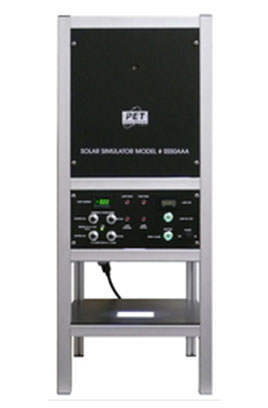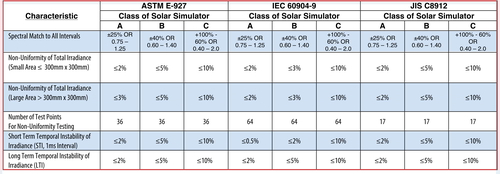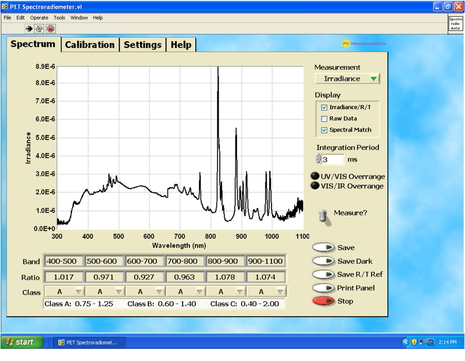Solar Simulators
Photo Emission Tech., Inc., manufactures and markets cell testers and solar simulation systems that are also known as sun simulator that provide full spectrum light equivalent to the sunlight. The primary applications of these solar simulators are checking Photovoltaic Cell performance, materials testing, photo-lithography, cosmetic testing and in any other application where the effect of exposure to sun light needs to be studied, such as photochemistry/photobiology testing and environmental exposure testing. Seven standard solar simulators models are available for each class that serves these markets. Solar simulator systems can be manufactured with three different air mass (AM) filters: AM0, AM1 and AM1.5. These solar simulators meet Class A requirements of ASTM E927-2010, IEC60904-9 Edition 2.0 2007-10 and JIS C 8912-1998: amendment 1-2005 & Amendment 2-2011.
The ground level spectrum of natural sunlight is different for various locations on earth. The constituents of the atmosphere affect both absorption and scattering. Elevation is another factor that affects the ground level spectrum, since the elevation determines how far the sun's radiation must pass through the atmosphere. For any given location the distance the sun's radiation must travel through the atmosphere changes as the day progresses, due to the changing angle of the sun. With the sun directly overhead the direct radiation that passes through travels the shortest distance through earth's atmosphere to reach the earth. The spectrum of this radiation is referred to as "Air Mass 1 Direct" (AM1D). For standardization purposes sea level is used as a standard reference site. The global radiation with the sun overhead is referred to as "Air Mass 1 Global" (AM1G). The spectrum of sun's radiation in space does not pass through any air mass hence it is referred to as "Air Mass 0" (AM0).





